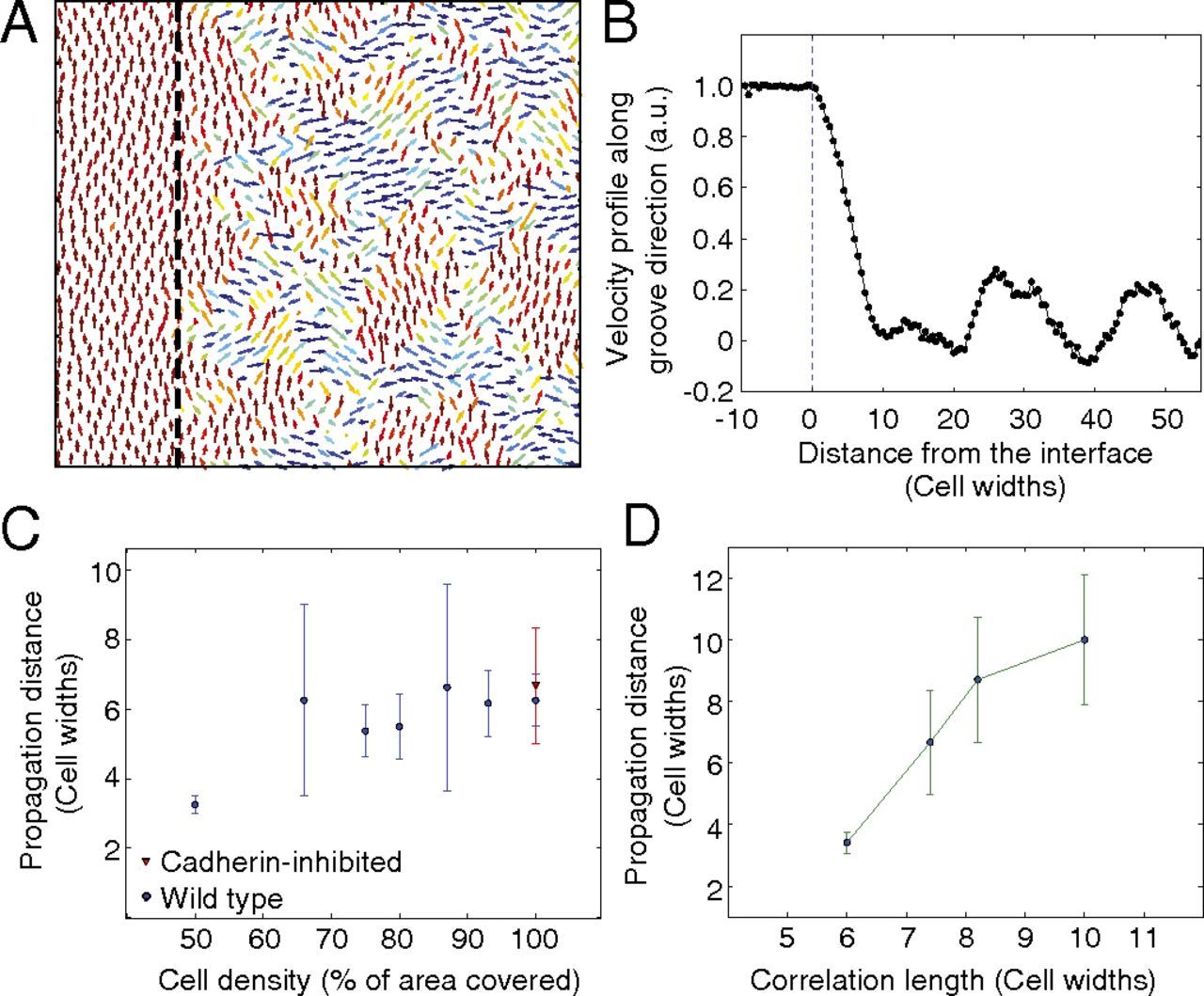
Citation
C. Londono, M.J. Loureiro, B. Slater, P.B. Lucker, J. Soleas, S. Sathananthan, J.S. Aitchison, A. Kabla, A.P. McGuigan
PNAS 111:1807-1812 (2014)
Abstract
Significance
Abstract
Significance
Group cell migration in response to guidance signals is a critical process in determining tissue organization. Here we explore the response of groups of cells to topographic guidance signals and reveal that guidance information can be transmitted between cells within the group. Significantly, we show that guidance information transmission is not dependent on cell–cell junctions or tensional forces within cells. Instead, we propose that signal transmission arises from a volume exclusion-type mechanism and is an emergent property that can arise in dense cell populations.
Summary
Directed migration of groups of cells is a critical aspect of tissue morphogenesis that ensures proper tissue organization and, consequently, function. Cells moving in groups, unlike single cells, must coordinate their migratory behavior to maintain tissue integrity. During directed migration, cells are guided by a combination of mechanical and chemical cues presented by neighboring cells and the surrounding extracellular matrix. One important class of signals that guide cell migration includes topographic cues. Although the contact guidance response of individual cells to topographic cues has been extensively characterized, little is known about the response of groups of cells to topographic cues, the impact of such cues on cell–cell coordination within groups, and the transmission of nonautonomous contact guidance information between neighboring cells. Here, we explore these phenomena by quantifying the migratory response of confluent monolayers of epithelial and fibroblast cells to contact guidance cues provided by grooved topography. We show that, in both sparse clusters and confluent sheets, individual cells are contact-guided by grooves and show more coordinated behavior on grooved versus flat substrates. Furthermore, we demonstrate both in vitro and in silico that the guidance signal provided by a groove can propagate between neighboring cells in a confluent monolayer, and that the distance over which signal propagation occurs is not significantly influenced by the strength of cell–cell junctions but is an emergent property, similar to cellular streaming, triggered by mechanical exclusion interactions within the collective system.
Figure sample

Propagation distance predictions from computational modeling. (A) Cell velocity field from computational model. Cells to the left of the interface (indicated by the dashed line) were biased to move vertically, mimicking cells on grooves. No bias was applied to cells to the right of the interface. Arrows are placed at the center of each cell within the sheet. Colors indicate the direction of migration. (B) Mean vertical velocity as a function of the distance from the interface for the parallel grooves case. The data are normalized so that the mean vertical velocity on the grooves is 1. The propagation distance is defined by the intersection between the curve and 0.321. (C) Propagation as a function of cell density for wild-type (blue) and cadherin-inhibited (red) cells. (D) Propagation distance as a function of the correlation of the cell population. According to the model, a correlation exists between propagation distance and correlation length. Error bars represent 95% confidence intervals.

